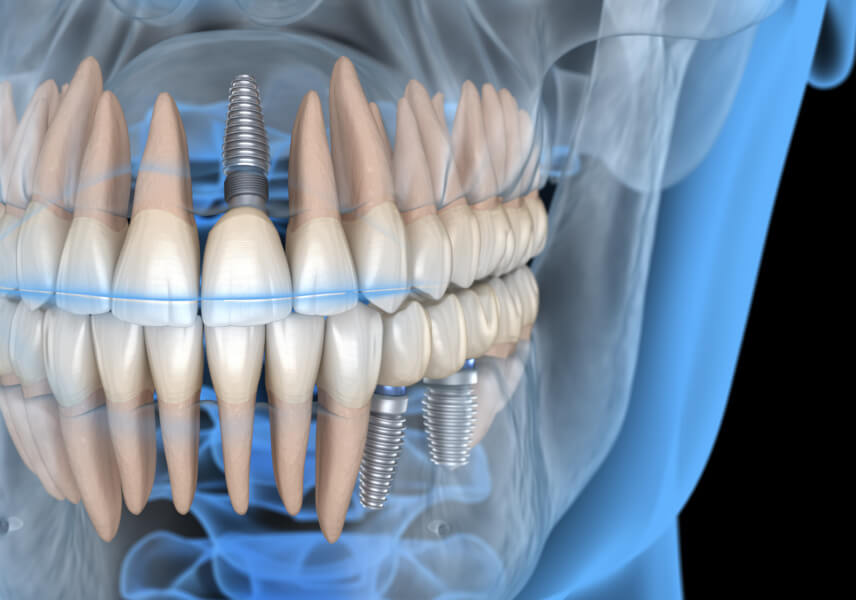Multiple teeth implants are recommended for patients who are missing or have suffered irreparable damage to several adjacent teeth. The process involves two or more titanium posts that are placed into the jawbone that act as your new tooth roots to support the dental crowns and/or dental bridge that will function as your new teeth.
Acting quickly can help save your remaining healthy teeth from the damage that can come from the gaps and bone deterioration that are typically caused by tooth loss. Multiple teeth implants provide the feel and function of healthy, natural teeth so you can look forward to smiling confidently and enjoying that juicy steak again!

Implant Supported Crowns
Implant supported crowns involve the planting of titanium post “tooth roots” for every missing tooth. Connectors called abutments are secured onto each of the implants then capped with dental crowns. In this way, every missing tooth is not only replaced with a new artificial tooth but also with an artificial tooth root. This is the option that will best support the patient’s long-term dental health as missing tooth roots can result in deterioration of the jawbone which can lead to structural changes and sagging facial features.
Implant Supported Bridge
While replacing every tooth root may be the most ideal scenario, this may be unrealistic or overwhelming for various reasons. Whether the reasons are financial or due to the extensive and invasive nature of oral surgery involved with multiple teeth implants, the implant supported bridge provides another solution that is desirable.
In this case, two titanium posts are placed on each end of the gap of adjacent missing teeth. These posts are then used to support the dental bridge rather than the adjacent natural teeth as with the traditional dental bridge.
What are my other options?
Alternative prosthodontic solutions for multiple missing teeth include the traditional dental bridges or partial dentures. A traditional dental bridge utilizes the healthy adjacent natural teeth on either side of the gap to support the bridge rather than placing teeth implants. The partial dentures are removable devices that may be fitted to existing teeth during the day and removed overnight.
What are the advantages of multiple teeth implants over other prosthodontic devices?
The key advantage to teeth implants over any other prosthodontic solution is their ability to preserve the bone. Because implants are the only option that replace the tooth root, this allows them to fuse with the jawbone to maintain their health.
Teeth implants are also superior in that they require no support from adjacent teeth. Both traditional dental bridges and partial dentures need to be supported by the healthy natural teeth, which can often cause weakening and damage to these teeth and even the surrounding gums. Furthermore, dentures can often be uncomfortable and cumbersome, and require ongoing adjustments as bone deterioration continues to affect jaw structure over time.
Do I need to replace my missing teeth?
The short answer is yes! Absolutely!
Finding a prosthodontic solution to multiple missing teeth is not only a question of aesthetics. Even a single missing tooth can affect speech and hinder your ability to chew. When this is multiplied into several missing teeth, the limitations also multiply. Chewing only on one side of the mouth is likely to cause structural issues with the jaw and result in a lopsided appearance. A large gap in your teeth will cause the other teeth to shift, which can also result in jaw alignment issues.
In short, we recommend dealing with missing teeth as quickly as possible in order to prevent the further damage that can be caused by leaving the gaps untreated.